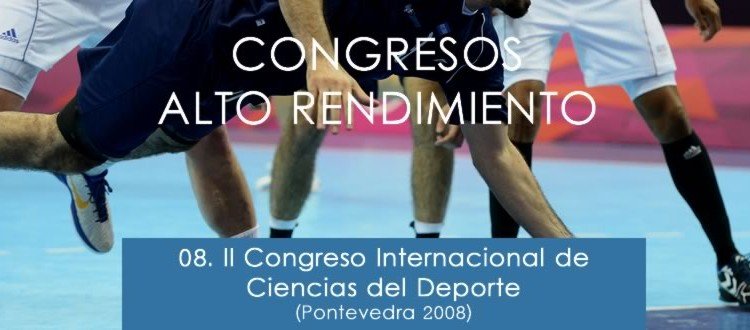Evaluation the old people’s visual motor memory, practitioners and no practitioners of physical activity
Evaluation the old people’s visual motor memory, practitioners and no practitioners of physical activity
Abstract
The association between physical activity (PA) and cognitive process is an emergent theme in scientific discussions, being the motive of questionings about the true performance of the exercise on elderly’s cognition, specifically the memory evocation. This study evaluated the old people’s visual motor memory (VMM) with practice (pPA) and no practice (nPA) of PA in relation to sex, age, schooling level (N=70), divided in 2 groups: one (pPA) with 36 old people and the other one (nPA) with 34, categorized in 2 age groups, one from 60-70 years old, and the other one with › 71. These subjects were classified according to their schooling level: Higher Level (NS), Secondary Level (NM) and Primary Level (NF). The instrument used was the test of the visual-motor memory (Thinus-Blanc et al., 1996, Azevedo, 2005). The statistic used the ANOVA and the Pearson’s coefficient of correlation. We obtained these conclusions: i) the old people’s VMM in relation to sex, age and schooling level did not present a significant difference in the performance of VMM test 1 and 2; ii) the old people’s VMM in relation to the PA practice presented a significant difference in the performance of VMM test 1 and 2; iii) the old people pPA presented better results as in the time as in the number of mistakes; iv) the VMM test presented a positive correlation between the time and the number of mistakes, indicating a relation between the increase in the time and the increase of the number of mistakes, being different only in relation to the r’s magnitude. The memory’s evaluation is an important indicator about the cognitive conditions on which is the subject and this is affected by the practice of regular PA.
1. Introdução
Há pouca informação decorrente de pesquisa sistemática sobre o efeito da atividade física sobre a memória, e acredita-se que dados dessa natureza podem contribuir para a compreensão das relações entre variáveis cognitivas (memória) e saúde física em homens e mulheres idosos. No âmbito da Educação para a Saúde, os dados provenientes desta investigação e de outras que dela decorrerem poderão oferecer contribuições úteis ao planeamento de medidas, com vista à manutenção, à melhoria e à promoção do bem-estar físico e psicológico e a prevenção das demências em cidadãos idosos. Os estudos sobre a memória visuo-motora na terceira idade ainda são escassos e apontam para a terminologia memória visuo-espacial, destacando haver nesse tipo de memória um declínio com o passar dos anos. Alguns estudiosos, como Salthouse (1991), apontam para um maior declínio por parte dos idosos em tarefas espaciais relacionadas à memória para faces, percursos citadinos, plantas de museu e sítios de edifícios na cidade. Alguns dos poucos artigos encontrados sobre a memória espacial, como o de Frieske e Park (1993), apontam para um declínio relacionado a cenas ou imagens complexas. Outros estudiosos, como Crook e Larrabee (1992), afirmam existir com a idade declínios relacionados à memória para faces, enquanto que, para Lipman e Caplan (1992), as memórias relacionadas a percursos urbanos apresentam um declínio favorável com o passar dos anos, Tendo este último estudo de Lipmam e Caplan também percursos a serem retidos e evocados para a realização das tarefas espaciais dos idosos. O presente estudo se propõe avaliar a memória visuo-motora de idosos praticantes e de não praticantes de actividade física, segundo factores sóciodemográficos, como idade, sexo, nível de escolaridade e prática de actividade física.
2. Marterial e Métodos
Caracterização da amostra
O quadro abaixo apresenta o resumo das características dos idosos segundo os factores sóciodemográficos.( Número e percentagem de sujeitos).
Quadro 1. Evaluation the old people’s visual motor memory, practitioners and no practitioners of physical activity
Instrumento
3. Análise e discussão dos resultados
Sexo
Idade
Escolaridade
4. Conclusão
Sexo
Idade
References
American College of Sports Medicine. ACSM position stand on exercise and physical activity for older adults. Medicine and Science in Sports and Exercise, 30 (6), 992-1008, (1998).
Antunes H.K.M., Santos R.F., Heredia R.A.G., Bueno O.F.A. e Mello M.T. Alterações cognitivas em idosas decorrentes do exercício físico sistematizado. Revista da Sobama, 6, 27-33, (2001).
Azevedo, A. C. A Memória Visual e a Capacidade de Reacção no Idoso. Monografia apresentada a Faculdade de Ciências do Desporto e Educação Física e FCDEF-UP, (2005).
Clarkson-Smith, L. e Hartley, A. A. The game of bridge as an exercise in working memory and reasoning. Journals of Gerontology, 45, 233-238, (1990).
Crook, T.H. e Larrabee, G.J. Changes in facial recognition memory across the adult life span. Journal of Gerontology, 47, 138-141, (1992).
Frieske, D.A. e Park, D.C. Effects of organization and working memory on age differences in memory for scene information. Experimental Aging Research, 19, 321- 332, (1993).
Lipman, P.D. e Caplan, L. J. Adult age differences in memory for routes: Effects of instruction and spatial diagram. Psychology and Aging, 7, 435-442, (1992). Salthouse, T.A. Working-memory mediation of adult age differences in integrative reasoning. Memory & Cognition, 20 (4), 413-423, (1992b).
Santos, D.L., Milano, M.E. e Rosat, R. Exercício físico e memória. Revista Paulista de Educação Física,12, 95-106, (1998).
Spirduso, W.W. Dimensões físicas do envelhecimento. Barueri, SP: Manole, (2005).
Stevens, F.C., Kaplan, C.D., Ponds, R.W., Diederiks, J.P. e Jolles, J. How ageing and social factors affect memory. Age ageing, 28 (4), 379-384, (1999).
Thinus-Blank, C., Gaunet, F e Péruch, P. La Mémoire de l’espace. Revista Science et Vie, 195 : 18-27, (1996).
Williams, P. e Lord, S.R. Effects of group exercise on cognitive functioning and mood in older women. Australian and New Zeland Journal of Public Health, 21, 45-52, (1997).






